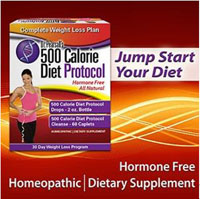The Zone Diet Review: Eight Reasons to Avoid the Zone Diet
Review of The Zone Diet
Grade: C- 3/10 This is a low-calorie, low-carb diet that makes people obessesed with eating everything in the exact 40-30-30 ratio while being very hungry from the lack of food.
Enter The Zoneby Dr. Barry Sears with Bill Lawren ©1995 328 pages Over 3 million copies sold. Review written by: Dr. Kendra Pearsall |
|
|||||||||||||||||||||||||||||||||||||||||||||
Summary:
The Zone Diet, invented by biochemist Dr. Barry Sears, is a low-carb, lower-fat, low-calorie diet that promises that if you have all your meals consist of 40% low-glycemic carbohydrates, 30% protein and 30% monounsaturated fat, you’ll be on track to permanent weight loss, disease prevention and maximum physical and mental performance. Why? Because a diet with these ratios keeps your insulin levels low; this is beneficial because insulin is the hormone that signals your body to store excess calories as fat. Insulin also increases the “bad” eicosanoids, a class of hormones that can:
- increase inflammation
- increase clot formation (increase heart attack risk)
- increase blood pressure and cholesterol
- decrease metabolism
- decrease immune system function
Sears also discusses in detail the role of omega-3 and omega-6 essential fatty acids and how they limit bad eicosanoids and increase good eicosanoids.
Praise For Enter The Zone:
1. Dr. Sears repeats the earlier works of Dr. Atkins in his recommendations for a low-carb diet and for good reason—excess carbs can cause weight gain.
2. Many of the food recommendations in the book such as increasing your intake of fruits, vegetables, olive oil, meats and fish are very healthy.
3. This diet goes beyond weight loss and educates the reader how a balanced diet can positively affect eicosanoid production and therefore can help people with inflammation, allergies, cancer, heart disease and life extension. I think this is an important point, and provides greater motivation to follow the program.
4. Sears’ emphasizes that food is medicine. Hippocrates, the father of medicine, said, “Let food be thy medicine and let thy medicine be thy food.” This is also a foundational principle in Naturopathic Medicine, the system of medicine that I trained in.
Criticism of Enter The Zone:
1. Calorie Deprivation
Sears clearly states in the book:
This is not a calorie-deprivation program. In fact, you may have trouble eating all the food required to reach the Zone.
I'm not sure what Sears' definition of calorie deprivation is but most people will have a Zone calorie allowance of a mere 800-1200 calories a day and this is calorie deprivation and you will be hungry. Read some of the Amazon reviews of Enter The Zone you’ll see that hunger and deprivation is a common occurrence:
"One thing that was very misleading about "The Zone" is that the authors claim that the dieter should not feel hungry. Not so. Make no mistake: this diet hinges on portion control and calorie counting, and I, like many people I know who are on the Zone diet, was famished beyond belief, particularly during the first two weeks"
"My daily food block requirements were only seven blocks, and I was always starving for something to eat, even directly after meals"
The research shows that low-calorie diets don’t work long term as people soon grow tired of starving and give up. Also, the lack of calories causes the metabolism to slow down which decreases the ability to lose weight.
2. Contains A Great Deal of Biochemistry
Many Amazon reviewers thought Enter The Zone was hard to understand as it was academic and technical; two reviewers remarked:
"The good doctor has a point. If only I could figure it out."
"The book was also extremely technical and difficult to understand for anyone short of a university degree in biology."
If you don’t mind reading about science and nutritional biochemistry, this is the book for you but if you are looking for advice that is easy and straight to the point, you should skip this book.
3. The Zone Diet is Difficult to Follow
The difficulty lies in the fact that you have to calculate and measure every gram of carbohydrate, protein and fat you eat for every meal.
This Amazon reviewer remarked:
"It requires a lot of planning and seems to require a lot of math. The ratio business sounds easy, but trying to use it when eating an actual meal and not just a cup of this and 3 ounces of that is very difficult."
4. Questionable Nutrition In Enter The Zone:
There were many nutritional statements I disagreed with in this book such as:
The best way to insure getting enough essential fatty acids (EFA’s) is to eat cooked oatmeal 3-5 times a week and salmon, swordfish or tuna three times a week.
This statement alone is enough to question Sears’ nutritional expertise. There are FAR superior ways to obtain essential fatty acids which you can find out about in my free newsletter. It should be noted that Sears has since changed his advice about essentially fatty acids in subsequent books and now fish oil, rich in EFA’s is a part of his product line.
5. Junk food is ok as long as you follow the Zone ratios.
Sears provides the following example:
The best way to insure getting enough essential fatty acids (EFA’s) is to eat cooked oatmeal 3-5 times a week and salmon, swordfish or tuna three times a week.You can eat ½ cup Haagen-Dazs ice cream as long as you eat 1 cup of low-fat cottage cheese with it.
What?! While it is true that eating protein and fat with a meal will not raise blood sugars as fast, high carb foods like ice-cream will still dramatically raise blood sugars and can make you gain weight. It’s not like adding extra protein will cancel out all the negative effects of the sugar and processed dairy and it is misleading to suggest otherwise.
6. Inconsistencies Throughout
There are many conflicting recommendations: Sears says to only eat low-fat dairy, but later in the book he recommends eating foods that have reduced insulin secretion and gives examples like high-fat ice-cream and whole milk.
7. Problems With Zone Products
There are two problems with the Omega Zone protein bars and shakes: bad taste and high in sugar. Fructose is the second ingredient in the shakes which Sears does not think is a problem because fructose is low on the glycemic index. However this is one of many examples of how the glycemic index is imperfect. Researchers are saying that fructose is worse than sucrose (table sugar) because it converts to fat more easily and does not provide satiety.
8. Obsession With The Zone
Some of the negative reviews on Amazon.com were due to the readers who became obsessed with making sure their meals are in perfect 40:30:30 ratios at all times:
"…But while he isn't a Nazi about carbs (as long as they are "good" carbs) he is a Nazi about sticking precisely to 40%/30%/30% proportions (carbs, protein, fat). To be honest I believe the author hammers the issue way too much. Even if the science is good I have to think people's metabolism vary a great deal (there's much evidence this is so). And I don't think its all that mentally healthy to get yourself stressed out whether your meal is exactly 40/30/30 (my friends both tend to be this way). Bottom line... good, useful, but like so many other diet docs, he lays his schtick on too thick to be entirely palatable for the average person."
"'The Zone' is a good instructional manual for people who have extremely poor diets, but for the average person with a modicum of common sense, it's quite useless...Many of the recipes are tasty - if you have an hour to cut up eight cups of fresh broccoli, that is. But counting out the various "blocks" took an inordinate amount of time and energy from my already busy schedule. Once I replaced the time I spent planning Zone menus, grocery shopping, prepping my meals, and other minutiae with daily cardio exercise, that's when I started to notice results!"
9. Where Is The Scientific Proof?
Samuel N. Cheuvront, PhD, RD published an excellent review of the science behind The Zone in an article titled: The Zone Diet Phenomenon: A Closer Look at the Science Behind the Claims.
The article lists two major problems with The Zone. The first one is that Sears claims that combining carbohydrates, protein and fat in precise 40:30:30 ratios will keep insulin levels low. However, the research shows that carbohydrates when combined with protein in Zone recommended ratios, produces a much greater increase in insulin than if carbohydrates were eaten alone or in combination with smaller amounts of protein. Based on these findings, The Zone Diet could potentially cause all the problems associated with high insulin that it purports to prevent.
The second major problem with The Zone is that it oversimplifies the effect that protein, carbohydrates, glucagon and insulin have on the delta 6 and 5 enzymes in the eicosanoid hormone cascade. In plain English this means that Sears tells us if you eat more protein and less carbs you will have lower insulin levels you will make good eicosanoids (hormones) instead of bad hormones. This isn't true. The truth is that the hormonal system is very complex and both protein, carbs, glucagon and insulin will increase good and bad hormones. Sears cleverly omitted any of the information that would make his simplistic theory sound contradictory but at the expense of the truth.
Dr. Cheuvront concluded his review with the following:
The theories and arguments of popular low carbohydrate diet books like the Zone, rely on poorly controlled, non-peer-reviewed studies, anecdotes and non-science rhetoric. A closer look at the science behind the claims made for the Zone Diet reveals nothing more than a modern twist on an antique food fad.
Ouch! Well there you have it. The Zone Diet is not the amazing breakthrough in nutritional biochemistry that Sears would have you believe, but a repackaged low-calorie, low-carb diet that will cause you to be so hungry you'll rue the day Barry Sears was born.
So if you're a Zone groupie stop calculating every gram of food you eat! Learn the truth about natural weight loss with the Enlita Online Classes.
About the Author:
Dr. Kendra Pearsall, N.M.D. is a Naturopathic Medical Doctor specializing in natural weight loss and food addiction. She created Enlita.com to help millions of people achieve optimal health, natural weight loss and life success with her free weekly e-newsletter (sign up at the top of this page.)



